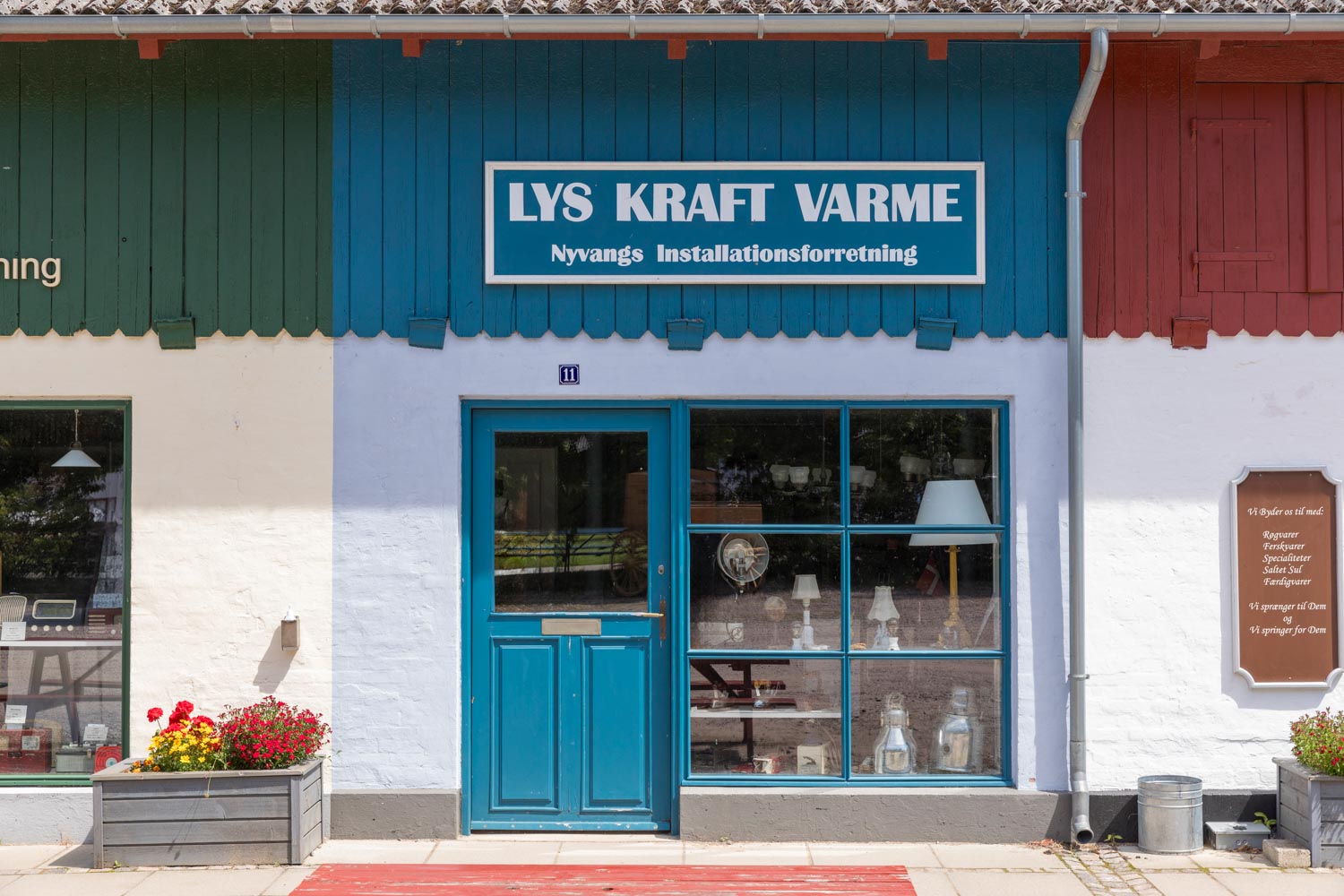Nyvang’s electrical installation store is set up to resemble how such a store might have looked in the early 1940s. There are chandeliers hanging from the ceiling and wall sconces, exactly the kinds of lighting that customers would have wanted in the 1940s. Spare parts for items like heaters, hotplates, and stoves were also in high demand, so you’ll find those in the store as well.
The electrical installation store also showcases examples of household appliances that became increasingly common in the 1950s to ease the burden on housewives. These include refrigerators, mixers, and a fully functional Ferm washing machine.
Denmark got its first power plant in 1891. After 1900, the construction of power plants really took off. In rural areas, these were often organized as cooperatives. During the German occupation, electricity was rationed, and new customers had to provide their own copper for installations. Already in 1940, limits were placed on the strength and number of light bulbs in private homes, and in 1942, it became illegal to sell electric heaters, hotplates, and stoves. The rationing of electricity was lifted in 1946, and from that point, electrification spread rapidly to all Danish homes.
Nyvang’s electrical installation store is set up to resemble how such a store might have looked in the early 1940s. There are chandeliers hanging from the ceiling and wall sconces, exactly the kinds of lighting that customers would have wanted in the 1940s. Spare parts for items like heaters, hotplates, and stoves were also in high demand, so you’ll find those in the store as well.
The electrical installation store also showcases examples of household appliances that became increasingly common in the 1950s to ease the burden on housewives. These include refrigerators, mixers, and a fully functional Ferm washing machine.
Denmark got its first power plant in 1891. After 1900, the construction of power plants really took off. In rural areas, these were often organized as cooperatives. During the German occupation, electricity was rationed, and new customers had to provide their own copper for installations. Already in 1940, limits were placed on the strength and number of light bulbs in private homes, and in 1942, it became illegal to sell electric heaters, hotplates, and stoves. The rationing of electricity was lifted in 1946, and from that point, electrification spread rapidly to all Danish homes.

Sign up for our newsletter so you're always up to date and know what's going on at Oplevelsescenter Nyvang.